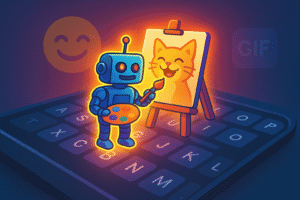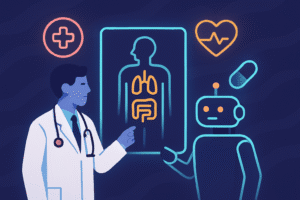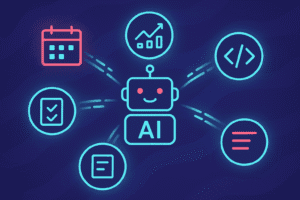How does AI actually work?
What Is Artificial Intelligence?
Artificial Intelligence (AI) refers to the ability of machines to perform tasks that typically require human intelligence. These tasks include learning, reasoning, problem-solving, perception, and even language understanding. But how does AI actually work under the hood?
“Artificial Intelligence is not magic — it’s math, data, and logic at scale.”
AI combines advanced algorithms, massive data sets, and computing power to mimic human cognition. Whether it’s Siri answering your question or Netflix recommending your next favorite show, AI is driving it.
Core Components of AI
To grasp how AI functions, you need to understand its key components:
1. Data Collection
AI systems rely heavily on data — the fuel for intelligence. From customer behavior to sensor readings, AI learns by analyzing structured and unstructured data.
2. Algorithms and Machine Learning
At the heart of AI are algorithms, a set of instructions the machine follows. Machine learning (ML) is a type of AI where machines learn from data instead of being explicitly programmed.
Types of machine learning:
- Supervised Learning – trained with labeled data
- Unsupervised Learning – detects patterns in unlabeled data
- Reinforcement Learning – learns via trial and error using rewards
3. Neural Networks and Deep Learning
Neural networks mimic the human brain using interconnected layers of nodes. Deep learning stacks many of these layers, allowing AI to recognize patterns in images, speech, or text with remarkable accuracy.
This is how self-driving cars can identify stop signs, or how ChatGPT processes your questions.
Real-World AI Applications
AI isn’t just theory — it’s actively used across industries:
- Healthcare – AI diagnoses diseases, reads X-rays, and even predicts patient deterioration.
- Finance – Fraud detection and high-frequency trading algorithms.
- Retail – Personalized recommendations and dynamic pricing models.
- Marketing – Predictive analytics and customer segmentation.
Check out this Harvard Business Review article that breaks down enterprise AI adoption trends.
Challenges and Misconceptions
Many believe AI is infallible or sentient — it’s not. AI models are only as good as their training data. Bias, lack of transparency, and ethical concerns are all valid issues.
AI doesn’t think — it computes. It doesn’t understand in the human sense but responds based on statistical patterns in data.
Why You Should Care
Even if you’re not a developer or techie, AI is shaping your daily experience — from the content you consume to the decisions businesses make about you. Understanding how it works helps you make better, more informed choices.
“You don’t need to code to comprehend AI — just curiosity.”
Related Content
Share this post:














Post Comment